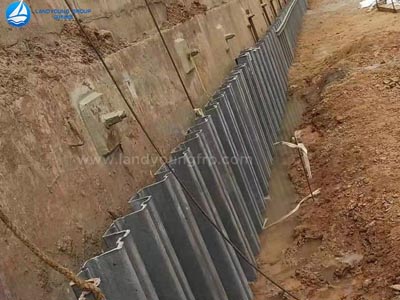Jun. 25, 2023
Construction & Real Estate
Introduction:
Sheet piling is a construction technique that has gained immense popularity in the field of civil engineering. It serves as a versatile solution for various geotechnical and water-related projects. In this article, we will delve into the concept of sheet piling, its purpose, and its wide range of applications.

Sheet piling refers to a method of constructing retaining walls, flood barriers, and bulkheads using interlocking steel, vinyl, or wooden sheets. These sheets, known as piles, are driven vertically into the ground to create a barrier against soil or water pressures. The interlocking mechanism ensures structural stability, allowing the sheets to function collectively as a wall.
Types of Sheet Piling:
Sheet piles come in different materials and shapes, each with its own advantages and applications. The most common types include:
Steel Sheet Piling: Steel sheet piles are widely used due to their strength, durability, and versatility. They are available in various profiles, such as Z-shaped, U-shaped, or straight sheets, offering different load-bearing capacities and adaptability to different soil conditions.
Vinyl Sheet Piling: Vinyl sheet piles are lightweight and corrosion-resistant, making them ideal for projects involving water retention, seawalls, and erosion control. They are easier to handle and install compared to steel sheet piles, making them a popular choice in certain applications.
Wooden Sheet Piling: Wooden sheet piles, typically made of timber, are commonly used for temporary structures or projects with a limited lifespan. They are cost-effective and environmentally friendly, but they may not provide the same level of strength and durability as steel or vinyl options.
Applications of Sheet Piling:
Sheet piling is widely utilized in a range of construction projects, including:
Retaining Walls: Sheet piles are commonly employed in the construction of retaining walls to prevent soil erosion and maintain the stability of excavated areas. These walls are essential for creating basements, underground structures, and highways.
Flood Protection: Sheet piling acts as a crucial component in flood protection systems. By constructing barriers along riverbanks, coastlines, or canals, sheet piles help mitigate the impact of flooding and protect surrounding areas from water damage.
Marine Structures: Sheet piling plays a vital role in the construction of marine structures such as seawalls, jetties, and harbors. These structures provide stability, prevent erosion, and ensure safe navigation in coastal areas.
Cofferdams: Temporary cofferdams are created using sheet piles to provide a dry working environment for construction activities below the water level. They are commonly used for bridge piers, dam construction, or pipeline installation.
Conclusion:
Sheet piling is a versatile construction technique that offers effective solutions for various geotechnical and water-related projects. Whether it is retaining walls, flood protection systems, marine structures, or temporary cofferdams, sheet piles provide stability, strength, and durability. By understanding the concept and applications of sheet piling, engineers and contractors can make informed decisions regarding the selection and implementation of this innovative construction method.
If you are interested in sending in a Guest Blogger Submission,welcome to write for us!
All Comments ( 0 )